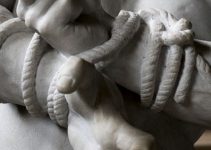How to File Bankruptcy in Georgia
Contents
Bankruptcy was created to help individuals who are overly consumed to relinquish their excess debt. However this is only for those who have entered debt out of necessity. These include those who have recently divorced, those who have lost employment, those who have illnesses requiring hospitalization, and those who have lost major clients during their employment.
Bankruptcy is often abused by those with excess consumer debt, so the government installed new bankruptcy acts to inhibit abuse. The 2005 Bankruptcy Act increased the monthly payments for Chapter Thirteen bankruptcy and also increased the difficulty of achieving Chapter Seven bankruptcy. Other abuse and prevention acts make access to Georgia bankruptcy courts more difficult.
The 2005 Bankruptcy Act also requires individuals to attend credit counseling at least six month before applying for bankruptcy. After the bankruptcy process is complete, individuals are also required to attend a financial management course.
Means Testing
All those filing for bankruptcy are required to submit to a means test. This test will compare an individual’s expenses and income to the median income and expenses of the state of Georgia’s residents. Falling below the median will result in Chapter Seven bankruptcy eligibility and coming above the median will result in Chapter Thirteen bankruptcy eligibility.
Chapter Thirteen Bankruptcy
Chapter Thirteen bankruptcy allows individuals to eliminate their excess debt by paying off creditors with their own income. The court will evaluate an individual’s expenses, income, debts, and living situation before assigning a personal payment plan. This repayment plan will designate how much is needed to be paid each month in order to eliminate all debts in a maximum of five years.
A Chapter Thirteen plan can allow an individual to submit these payments monthly him or herself or the payments can automatically be withdrawn each month from his or her banking account. Payments can also be taken automatically from an individual’s wages.
Chapter Seven Bankruptcy
Chapter Seven bankruptcy allows individuals to eliminate their debt through the liquidation of personal property. The court will assign a bankruptcy trustee to the case who will liquidate the non-exempt property. All properties will be liquidated for their current values rather than the values for which they were purchased.
The funds obtained will then be used to pay off creditors after the trustee receives payment through the compensation. Not all property can be liquidated. All property is broken into exempt properties and non-exempt properties. Exempt property can include motor vehicles, homes, some forms of real estate, furniture, insurance, pensions, books, clothing, appliances, and other forms of property under a certain value. If an individual desires to keep a non-exempt property, he or she is required to purchase the property for the value for which it would otherwise have been sold.
Automatic Stays
After an individual has filed his or her bankruptcy paperwork, an automatic stay will go into effect. This stay will disallow creditors from contacting him or her for debt reasons. All foreclosures will also be halted. In order for this automatic stay to remain constant, an individual who has filed for Chapter Thirteen bankruptcy must begin making his or her payments.



